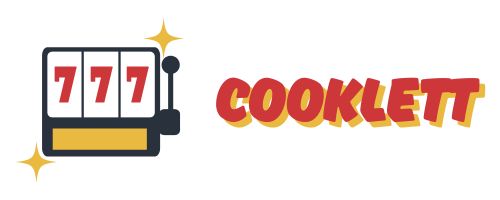If you’re looking to build your skills without risking a lot of money, micro stakes casino games are a great place to start. Playing at micro stakes lets you learn and practice solid strategies while keeping your losses small. It’s less stressful, and you can have fun while building real experience at the tables.
- NFC Technology For Land-based Casinos
- The Future of Sports Betting Legislation in Brazil: Key Developments and Implications for the Industry
- Our Insights on Emerging Trends in Betting for US Players
- Staying Current with Gambling Regulation Updates
- The Ultimate Guide to the Best Live Dealer Casino Game Providers in 2025
- Your Source for Casino Industry Headlines and Updates
Many new players jump into these low-stakes games and find out that the best strategies are often simpler than they think. You don’t need fancy moves—playing tight and aggressive, paying attention to your opponents, and not trying to bluff too much will help you see better results. If you support your game with a little study and patience, you’ll improve surprisingly fast and enjoy your time at the casino even more.
Understanding Micro Stakes Casino Play

Micro stakes games offer a low-risk way to practice your skills and manage your budget. You will meet a wide mix of players, from beginners to regulars, and the games’ pace and style are shaped by who joins in.
What Are Micro Stakes?
Micro stakes refer to casino and poker games with the smallest buy-ins and bets. In online poker, these are usually games with blinds like $0.01/$0.02 or $0.05/$0.10. If you are playing slots or casino games, micro stakes could mean spins or bets as low as a penny.
The main goal at these stakes is to help you play without risking much money. This makes it easier to learn the basics and gain confidence.
Key features of micro stakes games:
- Buy-ins usually range from $1 to $5
- Blinds often start at just a few cents
- Focus is more on fun than profit
You will not find much pressure here, and losses stay small. This is the ideal area for beginners or anyone wanting to test strategies at a low cost.
Player Types at Micro Stakes
At micro stakes tables, you will see a variety of player types. The most common are beginners who are still learning. These players—often called “fish”—make simple mistakes, call too often, or chase unlikely draws.
There are also some regular players who play daily, using basic strategy and discipline. They look for small but steady wins. A few aggressive players—sometimes called “maniacs”—may also show up, betting big even with weak hands.
Common player types:
| Type | Main Traits | Typical Mistakes |
|---|---|---|
| Fish | Calls too much, loose | Plays too many hands |
| Regular | Tight, solid, patient | Overly cautious at times |
| Maniac | Very aggressive | Bets big with bad hands |
Understanding these groups helps you adjust your approach in every session.
Why Micro Stakes Attract Recreational Players
Micro stakes are popular with recreational players because the risks are very low. You do not need a large bankroll to join, and losing a few dollars will not hurt most people. This draws in those who want fun or social play without worrying about big losses.
Many new players prefer these games because they can try new things and learn at their own pace. Tables are usually more relaxed, with friendly chat and little pressure to perform.
Casual players often just want some quick entertainment after work or while relaxing at home. Micro stakes games provide that easy, low-stress option for anyone.
Essential Poker Strategies for Micro Stakes

To succeed at micro stakes poker, you need to focus on strong hands, choose your spots wisely, and avoid giving away chips to loose players. Consistent decision-making, reading your opponents, and sticking with proven approaches will help you win more often.
ABC Poker for Beginners
ABC poker means playing in a very straightforward style. You mostly play strong hands and avoid risky or fancy moves. At micro stakes, opponents often make big mistakes with bad hands. You make money by only getting involved with the best cards.
Use a tight starting hand selection. Raise or fold pre-flop, and try not to call too much without a good reason. Value bet your strong hands and do not try to bluff players who never fold. Focus on avoiding tricky bluffs and stick to the basics.
Even without advanced strategies, ABC poker helps you avoid most major mistakes new players make.
TAG Strategy Fundamentals
TAG stands for tight-aggressive. This means you play fewer hands, but you play them strongly. For micro stakes, this style is very effective. You fold weak hands, raise with good hands, and keep the pressure on your opponents.
A typical TAG approach includes:
- Playing in position whenever possible.
- Raising pre-flop with hands like big pairs and strong aces.
- Aggressively betting when you hit top pairs or better.
You should avoid calling too many bets unless your hand is clearly strong. TAG players take advantage of loose players who call with weaker cards. This disciplined style will help you avoid costly situations.
Reading Opponent Ranges
At micro stakes, you often face opponents who play too many hands. Even so, it’s important to try to guess what cards they might have. Think about their actions before the flop, on the flop, and after the turn.
Consider these points:
- Did they raise, call, or check in each round?
- Are they playing many hands or just a few?
- Do they bet big when they have something or try to bluff?
Make mental notes or simple lists of what hands your opponents might play from each position. Use their betting patterns to narrow down their possible hands each round. This skill helps you make better decisions about whether to call, raise, or fold.
Bluffing Effectively at Lower Limits
Bluffing at micro stakes is tricky. Most players won’t fold good or even medium hands, so you should only bluff in special spots. The best time to bluff is when you’re sure your opponent missed a draw or is very weak.
Small, well-timed bluffs can steal pots when you know your opponent has nothing. Avoid big bluffs against players who never fold. Make your bluffs look like strong value bets, and don’t overdo it.
Focus on winning value from your good hands instead of relying on bluffs to build your stack. If you bluff too often, you’ll lose chips to “calling stations” who refuse to fold.
Maximizing Value and Winning Micro Stakes Pots

To succeed at micro stakes, you need to focus on playing strong hands, betting for value, and taking advantage of players who make mistakes. The best way to win is to play smart and always think one step ahead.
Identifying Premium Hands
Premium hands are your strongest starting cards. These include pocket Aces, Kings, Queens, Jacks, and Ace-King. These hands win more often than others and can be played confidently.
Using a tight starting hand chart helps keep your play solid. Folding weaker hands stops you from getting into bad spots against lucky opponents. When you stick to the best hands, you avoid trouble and put yourself in a winning position.
Here is a quick list of premium hands you should play:
- AA, KK, QQ, JJ
- AK (suited or offsuit)
- AQ suited (sometimes)
- TT (sometimes, in good spots)
By only getting involved with these hands from early position, you reduce risk and set yourself up for bigger pots when you hit.
Value Betting Techniques
Value betting means betting when you think your hand is better than your opponent’s. At micro stakes, most players call too much, not too little. This means you should bet for value almost every time you believe you are ahead.
When you have a strong hand, bet big and make your opponents pay to see more cards. Don’t slowplay or check too much—most micro stakes players will call with worse hands. Use clear, sized-up bets on the flop and turn with your best hands.
Tips for value betting:
- Target players who call with weak hands (“fish”).
- Bet for value rather than trying to bluff.
- Use larger bet sizes to build the pot with your best hands.
Exploiting Fish and Weak Players
“Fish” are players who make lots of mistakes, call too often, and play weak hands. You should target these players to maximize your profits.
Watch for signs of weakness, like calling every hand or chasing draws. When you have a good hand, go for maximum value. Play aggressively and force them to make tough decisions. If they like to call big bets, don’t be afraid to keep betting for value.
Keeping notes on these players can help, too. Knowing which players call too much or never fold lets you plan your value bets and get the most out of your strong hands.
Advanced Tools and Multi-Table Play
To get an edge at micro stakes, you need to use the right tools and manage your attention across more than one table. Staying organized and using technology can sharpen your play and help you make better decisions.
Using a Poker HUD
A poker HUD (Heads-Up Display) is a helpful tool that shows statistics on your opponents as you play. Common stats include VPIP (Voluntarily Put Money In Pot), PFR (Pre-Flop Raise), and aggression frequency.
With this information, you can spot who plays too many hands or bluffs often. This helps you target weaker players and avoid costly situations.
Most HUDs let you customize what stats to see, so you get only the info you need. Make sure your HUD isn’t too crowded, as too much data can distract you. Using a HUD gives you a real-time advantage you can’t get just by watching every player on your own.
Managing Control Across 2 Tables
Playing two tables at once is one of the best ways to increase your win rate without losing focus. It doubles the hands you see per hour, so you get more chances to use your skills.
To control both tables, set your layout so you can see all the action. Try tiling windows side-by-side or stacking them if you prefer. Always set alerts for your turn, so you don’t miss any hands.
You’ll need to keep a steady pace and avoid rushing big decisions. Start with just two tables and don’t add more until your results and concentration stay strong. This lets you stay sharp and make solid plays on every hand.
Leveraging a Poker Cheat Sheet
A poker cheat sheet is a simple reference with key information, like starting hand charts and basic odds. Having a cheat sheet near you can save time and help you avoid common mistakes.
It’s usually a printed sheet or a digital image showing which hands to play from each position and how to respond to bets. Some players include common odds, such as the chance to hit a flush or straight after the flop.
You don’t need to memorize every hand right away. Keeping a sheet handy lets you make quick and correct choices, especially when facing tough decisions or new situations. Over time, you’ll rely on it less, but it’s a great learning tool at micro stakes.
Bankroll Management for Value and Longevity
Protecting your bankroll helps you play longer, have more fun, and avoid losing money too quickly. Good habits also help you stretch your funds and get the most value, especially at micro stakes.
Maintaining Value for Money
Micro stakes games let you play with small amounts, but it’s still important to make each dollar last. Set a fixed budget for each session. Only bring what you can truly afford to lose and never chase your losses.
Limit the size of your bets to avoid big swings. Many players suggest never risking more than 5% of your total bankroll in a single game or session. This keeps you from running out of money after just a few losses.
Tracking your spending and winnings is smart, too. You can use a simple notebook or a spreadsheet. This helps you spot bad habits and keeps you honest about your results.
Splitting your funds into separate amounts for different games, like cash games and tournaments, can also help. Staying organized means you’ll make better choices and enjoy the game for longer.
| Tip | What to Do |
|---|---|
| Set a session budget | Decide before playing |
| Bet small amounts | Keep bets low |
| Track wins and losses | Use a log or app |
Online Poker Bankroll Tips
Managing your bankroll is a bit different for online poker. Online games often run faster, so your money can go up and down more quickly. Start with low buy-in tables and move up only when you have enough funds.
Keep a safety cushion of at least 10 buy-ins for the level you’re playing. For example, if you’re playing $2 tables, keep at least $20 in your bankroll. This helps you deal with losing streaks.
Take breaks if you start losing too much or feel tilted. Playing when tired or upset can lead to mistakes and bigger losses. Set win and loss limits before each session to help you stick to your plan.
Watch out for small, repeated losses. Online poker can lead you to play too many hands or chase after losses. Keep sessions short and review your play so you learn as you go.
If you play different formats, like tournaments and cash games, don’t mix their bankrolls. Treat each game type like its own bankroll to avoid overspending. Staying disciplined makes your online experience both safe and fun.
Frequently Asked Questions
Understanding micro stakes poker can help you avoid costly mistakes and build lasting skills. Here are quick answers to common questions people have about beating these low-stakes games.
How can I consistently win at micro stakes poker?
You should focus on playing tight and aggressive. Choose your hands carefully before the flop and bet strong when you have good cards.
Avoid bluffing too much at these limits. Most players at micro stakes call with weak hands, so stick to value betting.
What are the top strategies for playing micro stakes tournaments?
Start with a tight strategy in the early stages. Play only the best hands and avoid risky moves.
As the tournament gets closer to the money or the blinds go up, become more aggressive. Look for chances to steal blinds and put pressure on other players.
Which poker guides are best for beginners interested in micro stakes games?
Look for guides that use simple language and clear examples. “A Complete Guide to Beating the Micros” and “The Ultimate Guide to Small Stakes Poker Tournament Strategy” are good starting points.
Choose guides that explain basic concepts like position, starting hands, and how to bet.
Are there any free resources available to learn micro stakes poker strategy?
Many websites and forums offer free articles and discussion threads on micro stakes poker. YouTube also has videos by experienced micro stakes players.
You can find free sample chapters or beginner guides from poker training sites as well.
What adjustments should I make to my poker strategy when transitioning from play money to micro stakes?
Expect players to be tighter and more careful with their money in real games. Play more patiently and avoid making big bluffs that work against play money opponents.
Remember, the real money environment changes people’s strategies, so watch your table closely at first.
What common pitfalls should players avoid when playing at the micro stakes level?
One of the biggest mistakes is playing too many hands. Stick to playing with better cards.
Another pitfall is chasing losses with reckless bets. Always manage your bankroll and do not try to win everything back at once.
- NFC Technology For Land-based Casinos
- The Ultimate Guide to the Best Live Dealer Casino Game Providers in 2025
- The Future of Sports Betting Legislation in Brazil: Key Developments and Implications for the Industry
- Your Source for Casino Industry Headlines and Updates
- Staying Current with Gambling Regulation Updates
- Our Insights on Emerging Trends in Betting for US Players




